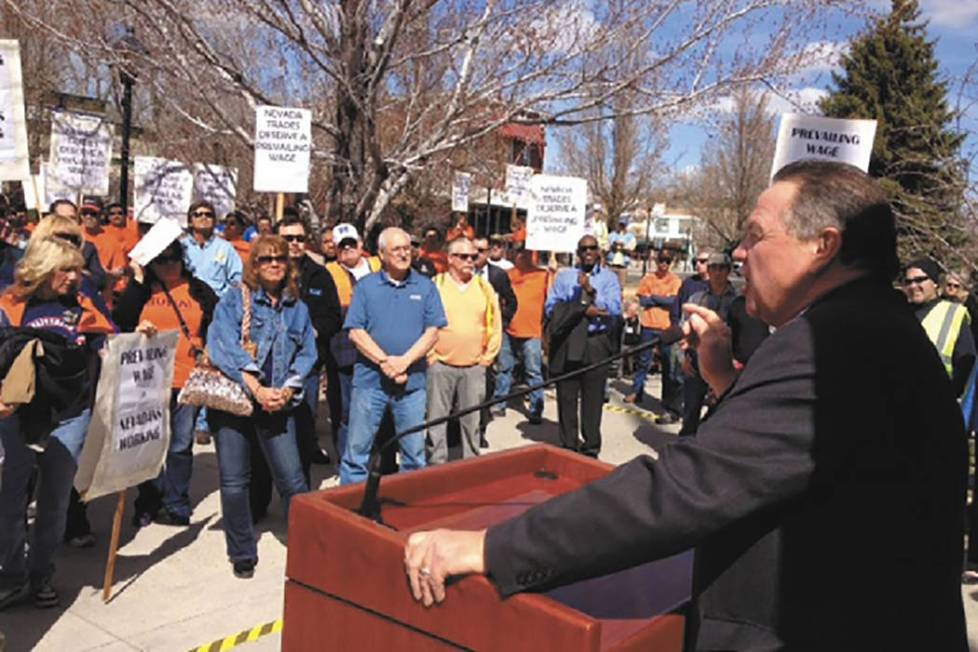The prevailing wage is a rip off. Here are the numbers to prove it.

CARSON CITY — For decades, fiscal watchdogs have contended that prevailing wage mandates increase infrastructure costs. Now Nevada governments are saying the same thing.
When a private company embarks upon a major capital project, it solicits bids. Its goal is to find someone who will meet its construction standards at the best price. It doesn’t care if a company uses fewer higher paid workers or more lower paid workers. It’s just interested in the bottom line.
Not so in government. Nevada government requires that the workers on most government construction projects receive union-wage rates, called the prevailing wage. A Nevada Policy Research Institute study found that those wage rates are around 45 percent higher than market rates.
This doesn’t make economic sense for taxpayers, which is why Republicans passed a bill during the 2015 session that modified Nevada’s prevailing wage law. They raised the threshold at which prevailing wage requirements were triggered for public projects from $100,000 to $250,000. They also allowed school districts and colleges to pay 90 percent of the prevailing wage. It would have been preferable for Republicans to have eliminated the prevailing wage altogether, but, alas, former Gov. Brian Sandoval should have done a lot of things differently.
Now Democrats are seeking to overturn even those minor reforms. Every Assembly Democrat is co-sponsoring Assembly Bill 136. It would lower the prevailing wage threshold from $250,000 to $100,000 and require schools, colleges and charter schools to pay the full prevailing wage. The bill came out of committee on Monday.
Requiring higher wages for construction projects increases costs. That’s obvious to anyone not receiving union campaign contributions. It’s also the conclusion of numerous government agencies that looked at how this would affect their budgets. The Clark County School District projects the changes will cost it $7.5 million a year. The Nevada System of Higher Education estimates an extra $9 million a year in expenses.
That’s just the cost of raising the prevailing wage from 90 percent to 100 percent. The NPRI study found the market wage rate is 69 percent of the prevailing wage rate. If it had been legal for the school district to pay the market wage rate, it would have had an extra $15 million a year to spend on construction. Nevada’s higher education institutions would have had an extra $18 million a year. Both numbers are compared to paying 90 percent of the prevailing wage, not the 100 percent Democrats prefer.
A fiscal note on the bill says, “The State Public Works Division conservatively expects a 15 percent increase to all applicable (Capital Improvement Program) projects.” That increase applies only to projects between $100,000 and $250,000, but it shows how much the prevailing wage increases costs. Gov. Steve Sisolak wants to spend $346 million on capital projects this biennium. Without the requirement to pay prevailing wage rates, Nevada would save $45 million based on the division’s estimate.
The prevailing wage has always been a rip-off. Nevadans now have a better, although still incomplete, idea of how much it’s costing taxpayers.
Contact Victor Joecks at vjoecks@reviewjournal.com or 702-383-4698. Follow @victorjoecks on Twitter.